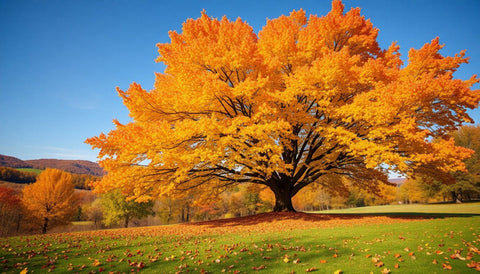Pollinators play a vital role in the ecosystem by helping plants reproduce. As the seasons change, it becomes even more important to support them with fall gardens that provide food and shelter. This guide will help you create a garden that supports pollinators during the fall season.

1. Understanding Pollinators
Pollinators are creatures that help plants by transferring pollen from one flower to another. Examples include bees, butterflies, hummingbirds, and more. They are crucial for maintaining biodiversity, but they face challenges such as habitat loss and food scarcity, especially in the fall.
2. Why Fall Gardens Matter
As summer comes to an end, many flowers stop blooming, reducing food sources for pollinators. A fall garden can provide essential food and shelter during this critical time, which helps sustain biodiversity and keeps pollinators active until winter.
3. Plant Selection for Fall
When designing a fall garden, choose flowering plants that bloom late in the season, such as asters, sedums, and goldenrods. Opt for native plants as they are more likely to attract local pollinators and promote a healthy ecosystem. A diverse mix of perennials, annuals, and shrubs will ensure there’s a variety of food sources.
4. Designing Your Fall Garden
To make your garden more inviting to pollinators, consider:
- Grouping plants in clusters so pollinators can easily access them.
- Varying the height of plants to create layers, placing taller plants at the back and shorter ones in front.
- Incorporating features like water sources and shelters to provide resting places.
- Utilizing brightly colored flowers and scented plants to attract specific pollinators.
5. Maintenance Tips for a Pollinator-Friendly Garden
Keep your garden pollinator-friendly by following these maintenance tips:
- Avoid using pesticides that can harm pollinators. Instead, use organic or eco-friendly methods.
- Perform seasonal tasks like removing debris and deadheading flowers to encourage more blooms.
- Leave some plant stems and seed heads for birds and pollinators to use as food during the winter.
6. Additional Features to Enhance Your Garden
To further support pollinators, consider adding these features:
- Bee hotels or nesting boxes for solitary bees.
- Mulch and compost to improve soil health.
- Garden structures such as raised beds or trellises to add diversity and visual interest.
7. Community Involvement and Awareness
Encourage community participation by:
- Engaging with local gardening or pollinator organizations.
- Educating others about the importance of pollinator-friendly gardens.
- Inspiring neighbors to create their own pollinator gardens, contributing to a larger ecosystem.































Comments (0)
There are no comments for this article. Be the first one to leave a message!